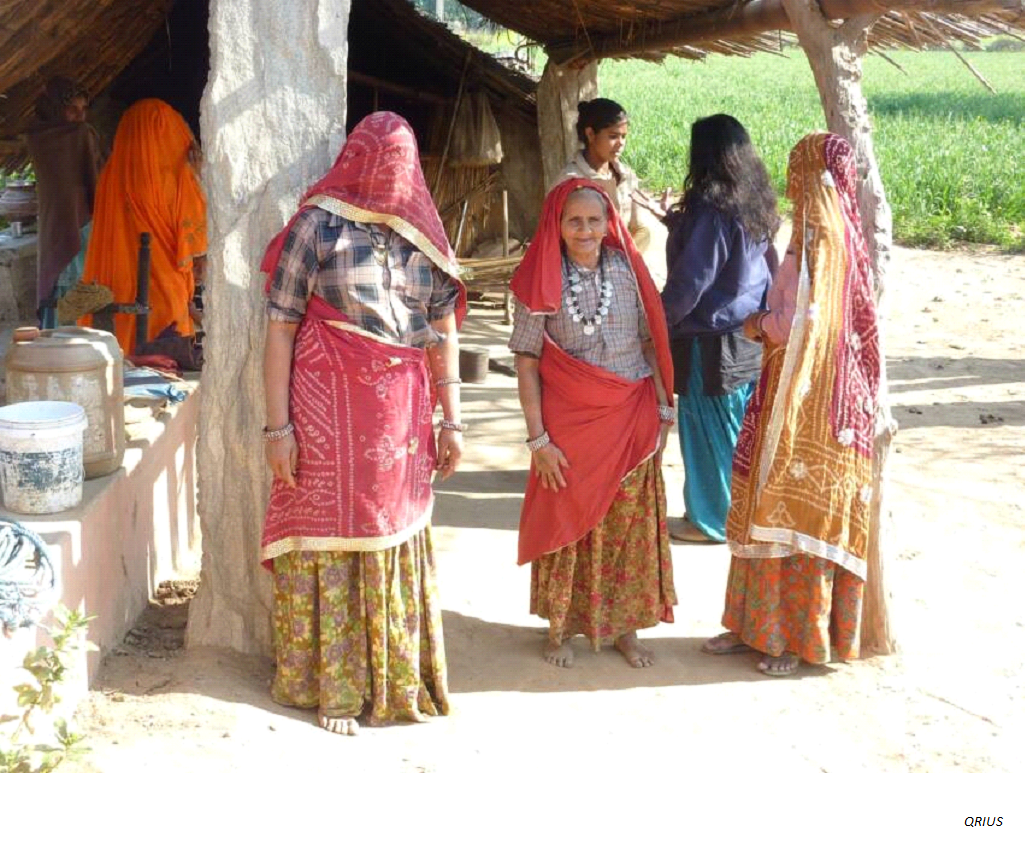Have we created a fertile ground for women to flourish?
08 Jan 2024
Opinion: Asrar Alam.
Despite targeted Skill India government initiatives strive to boost female participation, societal pressures and caregiving responsibilities stand out as formidable barriers. The PLFS 2022-23 furnishes valuable insights into female workforce participation, underscoring how family dynamics shape caregiving responsibilities and impact women’s career trajectories. Given the magnitude of the need, there is an urgent call to expand the coverage and accessibility of caregiving centres.
Within Skill India government programs, women receive special attention, given their historically low participation in the workforce. Despite this emphasis, current figures reveal a persistently low rate of female work participation, even among those with acquired skills. According to the latest PLFS data (2022-23), only 14.7 percent of female youth possess vocational training, with a meagre 4.2 percent from formal sources and 10.5 percent from informal ones.
Clearly, these statistics are not convincing, emphasizing the need for the country to intensify efforts in meeting the growing demand for skills and staying competitive globally.
Moreover, the issue intensifies when even vocationally trained females choose not to join the workforce, leading to a significant underutilization of the nation’s resources. According to the PLFS 2022-23 data, only approximately 37 percent of female youths (excluding those currently in education) who received formal training are part of the labour force.
Among several factors influencing women’s decisions to leave their jobs or refrain from joining the workforce, research indicates that caregiving responsibilities for their children and elders within the family significantly shape Indian women’s employment choices. Delving deeper into family structures and female work status sheds light on this relationship.
The data from the Periodic Labour Force Survey (PLFS) for 2022-23 allows us to quantify this connection and reveals that about 45 percent female youths (excluding females currently in education), who have received formal vocational training are found to be working in nuclear family setups. In contrast, joint families exhibit lower female participation in the economy, with about 32 percent of females working in such setups.
Further analysis within nuclear families indicates an increase in the work status of female youths without children, with about 56 and 43 percent of them in nuclear families with and without children found to be working.
This suggests that the absence or minimal burden of caregiving responsibilities, coupled with limited interference from family elders (other than parents) in decision-making, likely contributes to higher participation in nuclear families.
Family structures, be it nuclear or joint, are shaped by a complex interplay of cultural, social, economic, and personal factors, often beyond the control of individuals or government interventions. Nonetheless, fostering a supportive environment can play a crucial role in minimizing the impact of family structures on female participation. Affordable and quality childcare centres can be potential solutions to address these challenges.
India has witnessed progressive legislation aimed at improving female participation in the workforce. The National Creche Scheme, later revised as Palna in 2022, provides day-care facilities for children (6 months to 6 years) of working mothers.
Another noteworthy initiative is the 2017 amendment to the Maternity Benefit Act, encouraging establishments with fifty or more employees to allow work-from-home options for women. It also mandates companies with more than 50 employees to offer a creche on-premises, with costs borne by the employers.
While these government initiatives are commendable, several factors have limited their impact on overall female labour force participation. The number of creches under the scheme has declined over the years, and budget allocations have shrunk.
Additionally, the scheme predominantly caters to the economically disadvantaged section of society. Companies eligible to offer creche facilities under the Maternity Benefit Act of 2017 frequently fall short in providing these amenities on their premises, and the lack of official data on compliance further complicates the assessment of their effectiveness.
Despite childcare remains a major constraint, India’s rapidly aging population adds another layer of caregiving responsibility often assigned to women. While a predominantly young country, India boasts the second-largest aged population globally.
According to the UN Population Fund’s India Ageing Report 2023, there are 149 million people above the age of 60, comprising around 10.5% of the country’s population. With increasing life expectancy, this number is expected to double by 2050. Women, traditionally responsible for caring for senior household members, face challenges balancing work and elder care responsibilities.
Yet, not all seniors need caregiving; some actively support the younger generation by engaging in family caregiving responsibilities instead of being recipients. However, as they reach a certain age, they too require special care, and conventionally, the responsibility of providing that care is often assigned to women.
Government initiatives like the Atal Vayo Abhyuday Yojana (AVYAY) aim to support senior citizens. However, considering the increasing demand and to address the specific needs of day care centres, these initiatives must focus and broaden their coverage and raise awareness.
Women, irrespective of economic or social backgrounds, bear the weight of caregiving responsibilities. Government welfare programs addressing such needs should broaden their coverage to encompass all sections of society rather than focusing solely on the marginalized. However, the solution lies not just in government action, but in collective effort.
Companies in India grappling with skilled talent shortages can expand the pool of skilled resources by encouraging more women to join the workforce. Investing in childcare and elder care centres not only aligns with societal needs but also contributes to economic growth. By strategically utilizing Corporate Social Responsibility (CSR) funds to support these initiatives, companies can make meaningful contributions to society and the economy. It’s a win-win situation that supports families, fosters workforce participation, and drives sustainable development.
Asrar Alam, Associate fellow, National Council of Applied Economic Research (NCAER). Views are personal.
Published in: QRIUS, 08 Jan 2024






